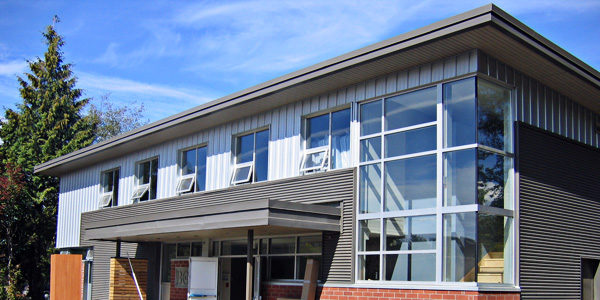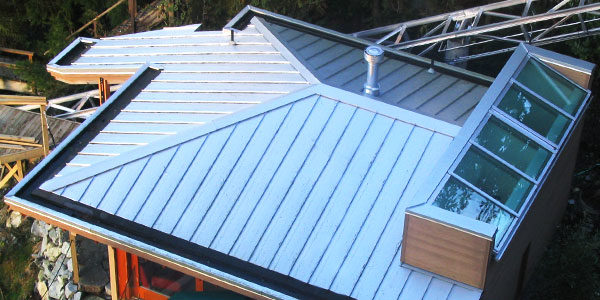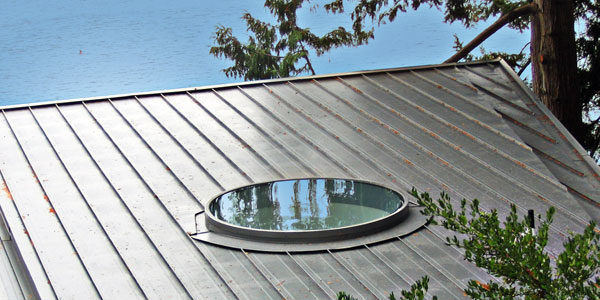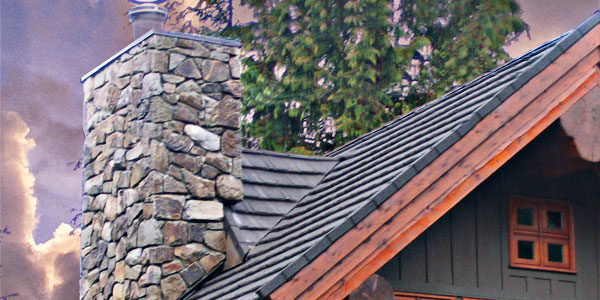Click the questions to reveal the answers.
Is a snap lock standing seam roof a good choice for buildings in areas that experience extreme weather?
A: Yes, for areas that experience heavy snow and cold temperatures, a snap lock standing seam will protect your home against roof damage and leaks because it sheds snow fast and is designed to prevent ice dams from forming. In areas that experience wildfires, a snap lock standing seam roof will prove less susceptible to a fire caused by burning embers landing on the roof. A snap lock standing seam roof is also made to withstand wind uplift in areas that experience extreme winds.
Will a metal snap lock standing seam roof attract lightning?
A: Lightning is attracted to the highest point on the ground, whether it is metal or not. If lightning does strike your roof, you can take comfort in the fact that a metal roof is non–combustible, which helps lessen the chances of a fire.
Who will install my metal wall cladding?
A: For quality control, we do all the work ourselves and do not hire subcontractors. Our employees, all of who are apprentices from British Columbia Institute of Technology’s (BCIT) Sheet Metal Program or skilled trade journeymen, complete each installation under the supervision of a project manager who holds T.Q. (Trade Qualification) designation.
Who will install my flashing?
A: Our employees, all of who are apprentices from British Columbia Institute of Technology’s (BCIT) Sheet Metal Program or skilled trade journeymen, complete each installation under the supervision of a project manager who holds T.Q. (Trade Qualification) designation. So that we have complete control over the quality of our work, it is our policy to never use subcontractors for an installation.
What types of flashing material should I select for my building?
A: Before selecting a flashing material for your building project, you should consider where the flashing is to be applied (e.g., windows, doors, skylights) and what types of building materials are to be used in the construction (e.g. brick, steel, wood). Talk to your contractor for suggestions on the right type of flashing for each building element or call us directly at 604.327.8029.
What is the span capability of a snap lock standing seam roof panel?
A: A panel’s span capability is determined by a number of factors. For information about span capability specific to each product or call us directly at 604.327.8029.
Should I expect to pay more for a snap lock standing seam roof as opposed to an asphalt or shingle cedar shake roof?
A: Yes, a snap lock standing seam roof will cost more upfront than an asphalt shingle roof, but it will last much longer, require less maintenance and reduce the need for a cooling system during hot weather. Over the long–term you will save money by opting for a metal roof rather than an asphalt roof. But when the price of a metal roofing system is compared to a cedar shake roofing system, there is very little difference in cost.
My building design calls for windows that are not standard shapes or sizes. Can you create custom flashing for these windows?
A: Yes, we offer custom sheet metal fabrication or peel & stick flashing for unconventional window shapes and sizes. View our custom fabrication section or call us directly at 604.327.8029 for a consult on what type of flashing would work best.
Is a snap lock standing seam roof suitable for low–sloped roofs?
A: Yes, snap lock standing seam roof is suitable for most low–sloped roofs, typically pitches of 2:12 or greater. Call us at 604.327.8029 to check if your design plan is suitable for a snap lock standing seam roof or consult our technical library for information about slope pitches for each product.
How does Crown Architectural Sheet Metal & Cladding ensure that my roofing panels are not damaged before installation?
A: We fabricate each roofing panel on site with our mobile rolling machine. This reduces the risk of roofing panel damage caused by transportation to the site or excessive handling.
Is a metal roof noisier than traditional roofing material?
A: No. A metal roof is not any noisier than traditional roofing materials because it is typically installed over a plywood substrate that is lying over insulated attic space, which dampens outside noise.
If I choose a metal roof for my project, will I receive a discount on my fire insurance?
A: Some insurance companies do provide a discount to building owners who install a metal roof. Check with your insurance provider to be sure.
How is metal wall cladding typically installed?
A: Typically, a water barrier is installed, then metal furring (z–bar or hat bar) is fixed to the existing outside building walls. The metal wall cladding is then affixed to the furring, whose depth is determined by the building specifications.
Are metal roofs walkable?
A: Yes, most metal roofs can support foot traffic, but this will depend on the specific roofing material. Call 604. 327.8029 for more information.
Are metal roofs considered a green building material?
A: Yes, most metal roofing contains some recycled steel content and can be installed directly over an existing asphalt roofing system. This reduces the amount of garbage headed for the landfill. Also, buildings with metal roofs stay cooler in the summer so there is less need to waste energy to run cooling systems. If a metal roof ever needs replacement, the metal panels can be recycled for use in new metal products.
Why does a copper roof turn green over time?
A: As a copper roof reacts with the air it develops a green layer of copper carbonate, also known as a patina. The patina acts as a defensive barrier against corrosion, protecting the roof from the elements.
Who will install my snap lock standing seam roof?
A: Our employees, all of who are skilled trades journeymen or apprentices from British Columbia Institute of Technology’s (BCIT) Sheet Metal Program complete each installation under the supervision of a project manager who holds T.Q. (Trade Qualification) designation. So that we have complete control over the quality of our work, it is our policy to never use subcontractors for an installation.




